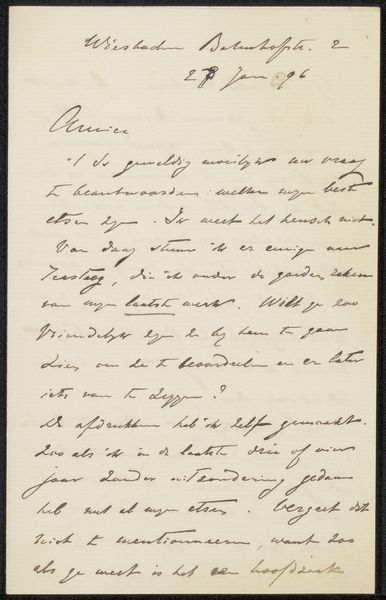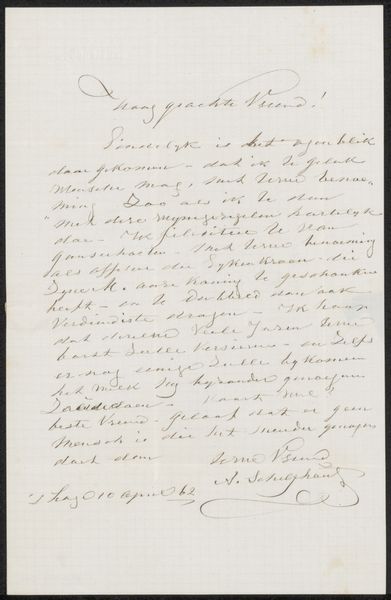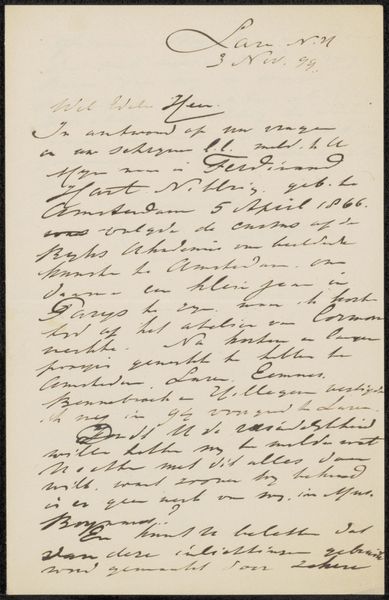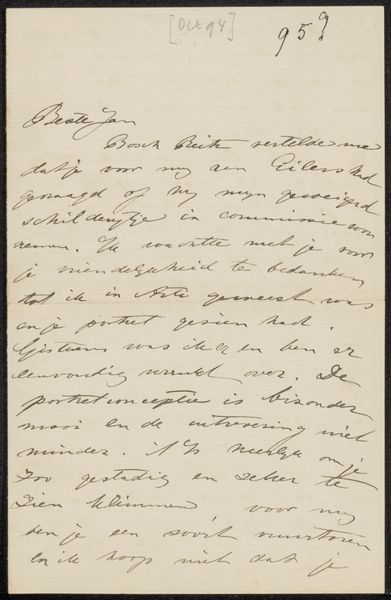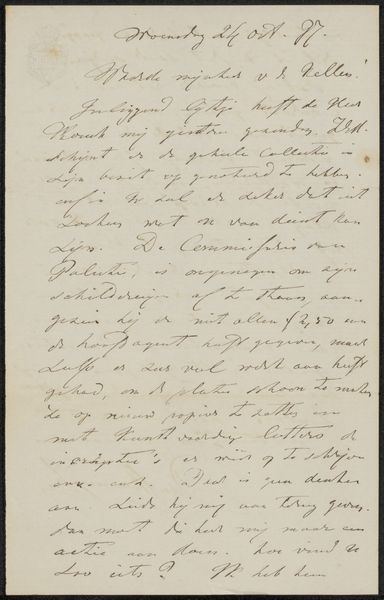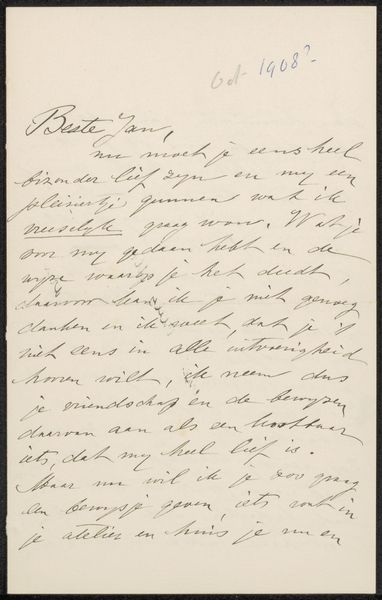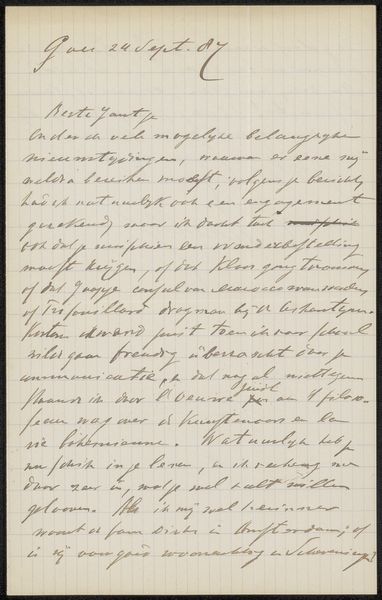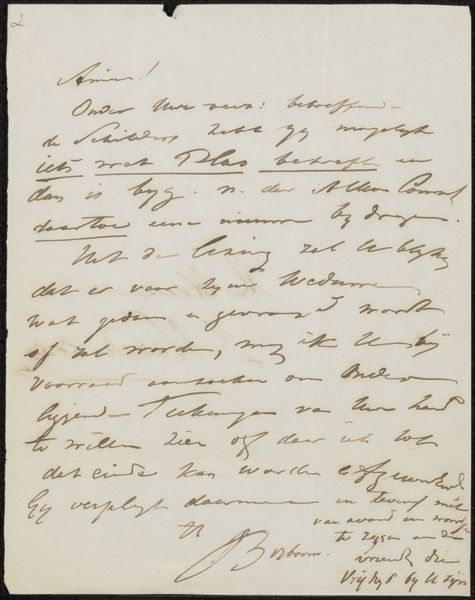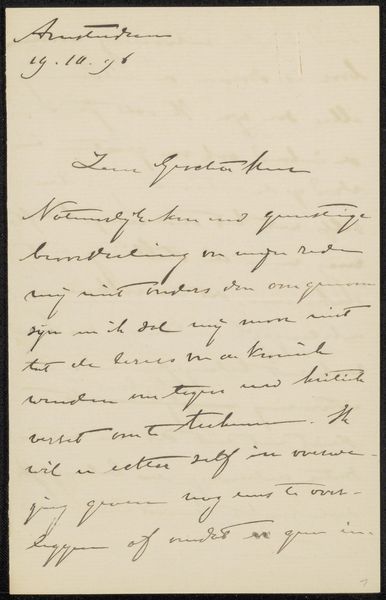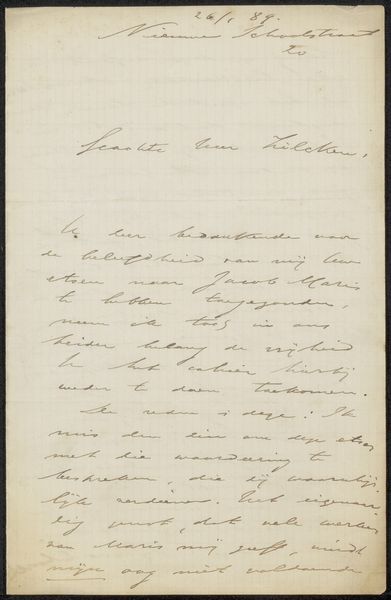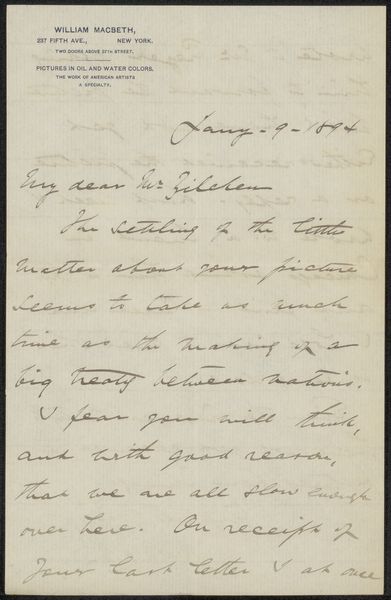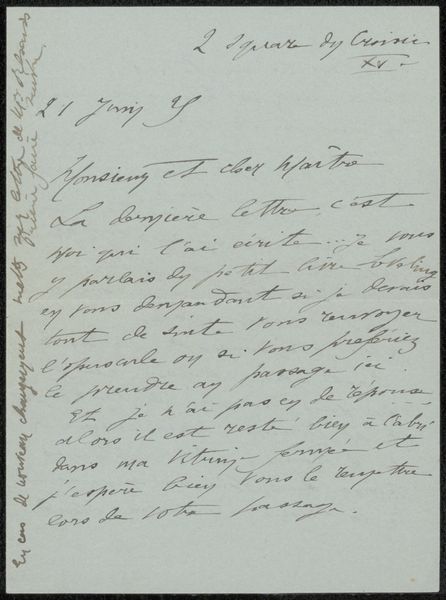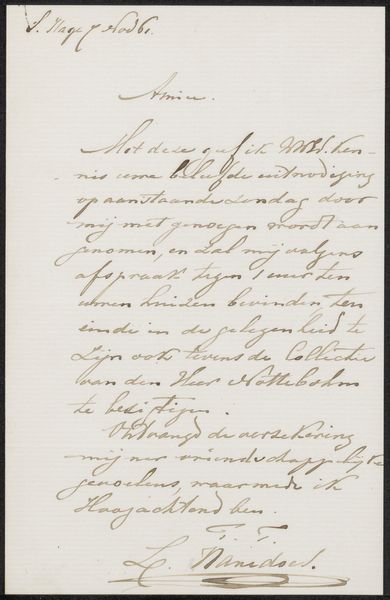
drawing, paper, ink, pen
#
drawing
#
ink drawing
#
pen drawing
#
paper
#
ink
#
pen
#
calligraphy
Copyright: Rijks Museum: Open Domain
Curator: We're looking at "Brief aan Jan Veth," which translates to "Letter to Jan Veth." It's believed to have been created sometime between 1901 and 1907 by Wally Moes, using pen and ink on paper. It exemplifies Moes’ skill with calligraphy. Editor: It's such an intimate glimpse into… well, a letter! I love how the handwritten text just flows like a stream of consciousness. It feels almost fragile, doesn't it? The slight fading gives it an aged aesthetic that almost makes you wonder about all the emotions held within its original context. Curator: Exactly, that sense of immediacy is very compelling. Jan Veth was a prominent art critic and artist. Moes, active in progressive artistic and social circles, often corresponded with key figures like him, positioning herself within these influential networks. This letter could contain valuable insights into the art world of that era, discussing exhibitions, critiques, or even social commentary. Editor: Knowing it was penned to an art critic certainly adds another layer! Do you think she might be subtly, or not so subtly, buttering him up for a favorable review? There's an intentional performance in crafting even a personal note. She seems confident in sharing intimate details that I'm probably not intended to know! Curator: (chuckles) It's plausible! Artistic reputation was built on the approval of critics like Veth. However, without delving into the letter’s specific content, we can appreciate the careful penmanship, the controlled yet fluid lines. It shows how even everyday correspondence was seen as an opportunity to express oneself aesthetically. Also consider this drawing represents an important way we understand women artist’s contribution at this time. Editor: So true. It makes me think about our modern emails versus this tactile, almost soulful way of communicating. There's a certain vulnerability in sharing something so personal on paper. I imagine Jan Veth unfolding the letter with curiosity. Almost like reading someone's mind right when they are comfortable enough to be so open. Curator: Well said. These seemingly simple drawings open a window into artistic practices and relationships from over a century ago, providing social context to artwork creation and validating art forms of a time that are typically not preserved. Editor: Yes, in that light, the beauty of "Brief aan Jan Veth" extends beyond its strokes and words—it embodies connection, artistic ambition, and a desire to be heard across time. It's so lovely.
Comments
No comments
Be the first to comment and join the conversation on the ultimate creative platform.
